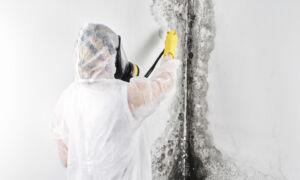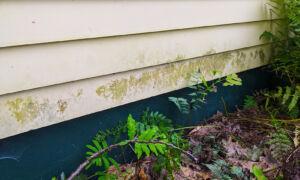Mold is more than just an aesthetic problem in a home; it can also pose a threat to your health. Exposure to mold has been linked to conditions, including allergic rhinitis, asthma, and even cognitive issues like brain fog.
In the “Health 1+1” program, Shao-Hung Wang, professor and chair of the Microbiology, Immunology, and Biopharmaceuticals Department at National Chiayi University in Taiwan, discussed the increasing number of mold-related poisoning incidents in recent years. He cited the 2004 contamination of Pedigree dog food, which led to kidney failure in approximately 6,000 dogs in Taiwan alone. More recently, in March of last year, toxic puberulic acid was found in red yeast rice supplements from Japan’s Kobayashi Pharmaceutical, a drug-maker company, resulting in over 100 deaths.
Health Risks of Indoor Mold
Beyond foodborne mold poisoning, indoor mold contamination is also a serious concern.Common Mold Habitats in Your Home
Mold thrives in damp, humid environments where nutrients are readily available, making certain areas of the home particularly susceptible, Wang noted.Bathrooms and Kitchens
Bathrooms and kitchens are particularly susceptible to mold, especially on silicone sealants, countertops, and hard-to-reach areas.Furniture and Wall Crevices
Mold can also form on furniture, walls, and ceilings.For example, the paint or varnish on wooden wardrobes may provide nutrients for mold. In humid, poorly ventilated conditions, mold spots often appear behind closets or in corners.
Basements
Poor ventilation in basements makes them prone to moisture buildup, creating ideal conditions for mold growth—especially on wooden wall panels.Potted Plants and Drip Trays
The soil in potted plants and the water collected in drip trays are also common breeding grounds for mold.Household Appliances
- Air Conditioners: Air conditioners tend to accumulate moisture, while indoor air contains skin flakes that serve as nutrients for mold.
- Washing Machines: Constant exposure to water makes washing machines prone to mold growth. Wang recommends having them professionally inspected at least once a year and periodically using mold removers to clean the interior.
- Dishwashers and Dryers: While high temperatures during washing and drying may help, they are not always sufficient to eliminate mold and spores completely. Mold can persist, particularly on rubber seals that do not come into direct contact with heat.
Preventing Mold Growth
A musty smell in a room is a key indicator of excessive humidity.Safe Mold Removal Methods
If mold develops on walls or silicone surfaces at home, a variety of commercial mold removers are available in spray and foam form. However, Wang cautioned against mixing mold removers with other cleaning or disinfecting agents, as this may trigger harmful chemical reactions. If a mold remover is unavailable, bleach can be used as an alternative.- Dilute bleach at a 1:100 ratio with water.
- Soak a paper towel in the solution and place it over the mold-affected area.
- Let it sit for one to three hours.
- Scrub the area with a sponge or scouring pad.






